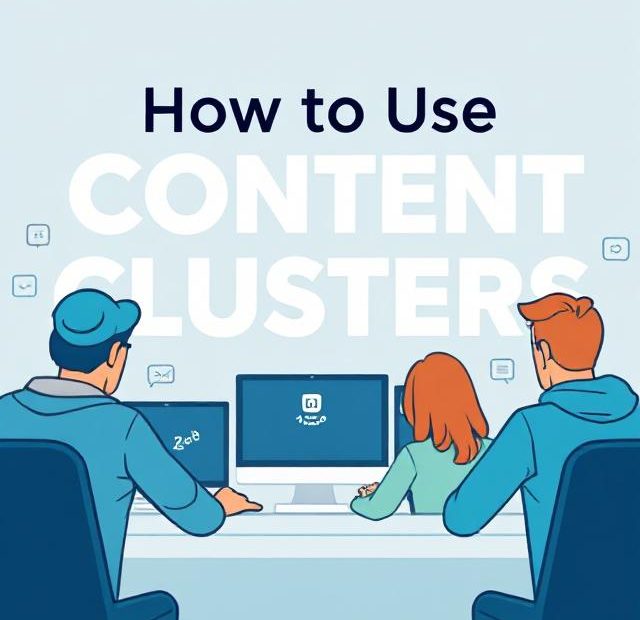As search engines evolve to prioritize user intent and topic relevance, traditional keyword-focused content strategies are becoming less effective. In 2025, the most successful websites are using content clusters to signal expertise, improve internal linking, and dominate the SERPs.
So what exactly are content clusters, and how do you use them for SEO? This article breaks down the concept, benefits, and step-by-step process to implement a content cluster strategy that works.
What Are Content Clusters?
Content clusters, also known as topic clusters, are a structured SEO strategy where a single pillar page covers a broad subject, and multiple cluster pages address specific subtopics related to that theme. These cluster pages all link back to the pillar page — and to each other — creating a strong internal linking network.
Think of it like this:
- Pillar Content: “Ultimate Guide to Email Marketing”
- Cluster Content:
- “How to Write Email Subject Lines That Convert”
- “Email Segmentation Strategies for eCommerce”
- “Best Email Marketing Tools in 2025”
By grouping content this way, you show Google that your website offers in-depth, organized, and expert coverage of the topic — a major plus for search rankings.
Why Content Clusters Matter for SEO
- Improved Keyword Coverage: You can spread related long-tail keywords across different cluster articles.
- Topical Authority: Google rewards websites that comprehensively cover a subject.
- Stronger Internal Linking: Helps search engines crawl and understand your site structure.
- Enhanced User Experience: Users can explore topics in a logical, helpful order.
- Higher Ranking Potential: Each cluster page can rank while boosting the pillar page.
Step-by-Step Guide to Using Content Clusters for SEO
1. Choose a Core Topic (Pillar Theme)
Select a broad topic that’s important to your audience and business. Use keyword research tools to validate search interest.
- Fitness blog: “Strength Training for Beginners”
- SaaS brand: “Project Management Software”
- Marketing agency: “Local SEO Strategies”
2. Identify Subtopics (Cluster Topics)
Brainstorm 5–15 subtopics that relate directly to your core theme. Each should answer a question or cover a specific aspect of the topic.
- “Best Strength Training Equipment for Home”
- “Strength Training vs. Cardio for Fat Loss”
- “How Often Should You Lift Weights?”
3. Create the Pillar Page
This long-form article should give a complete overview of the main topic. Use clear subheadings, a table of contents, and links to cluster pages.
4. Write and Optimize Cluster Articles
- Target a unique long-tail keyword in each post.
- Link each article back to the pillar page.
- Use structured headers, engaging visuals, and examples.
- Optionally, link to other cluster articles where relevant.
5. Interlink Strategically
Once all content is live:
- Link each cluster article to the pillar page using relevant anchor text.
- Link the pillar page to all related cluster articles.
- Cross-link between cluster articles when appropriate.
6. Monitor and Improve
Use tools like Google Search Console, Google Analytics, and Ahrefs to track performance. Update articles regularly with new data and examples.
Bonus Tips for Advanced SEO Performance
- Use Schema Markup for FAQs and How-To content.
- Repurpose cluster content into videos, podcasts, or infographics.
- Build internal tools like quizzes or calculators to enhance user experience.
- Promote your content cluster through social media and email marketing.
Common Mistakes to Avoid
- Choosing a pillar topic that is too broad or vague.
- Not linking between pillar and cluster pages.
- Publishing low-quality, thin content as cluster articles.
- Delaying the creation of the pillar page.
Conclusion
Content clusters are a scalable, powerful SEO strategy that helps you build topical authority, increase keyword coverage, and improve rankings. By creating a central pillar page and supporting it with relevant subtopics, you’ll satisfy both users and search engines — and set your content up for long-term success.
Need help planning a content cluster for your business? Let’s create a strategy tailored to your niche.
